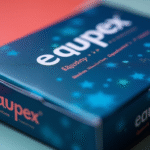Johnson & Johnson Shows Resilience with Strong Q1 Earnings
The start of 2025 has been anything but uniform for major healthcare companies in the United States. While some have maintained growth through clear bets on innovation, others have begun the year facing headwinds that force them to adjust their strategies and expectations for the rest of the year.
One company that demonstrated notable resilience is Johnson & Johnson, which reported Q1 earnings of over $21.9 billion, a 2.4% year-over-year increase. Innovative medicines, particularly Darzalex for multiple myeloma treatment and Tremfya for inflammatory diseases, drove double-digit growth.
However, Johnson & Johnson also faced challenges. The loss of patent exclusivity for Stelara resulted in a 32% sales decline. Additionally, potential tariff pressures of up to $400 million led the company to announce an ambitious plan to relocate part of its production within the US.
Merck Reports Positive Start but Faces Financial Hurdles
Merck also had a positive start, with Q1 revenues reaching $15.78 billion, a 10% operational growth. Keytruda, its leading immuno-oncology treatment, contributed over $6.9 billion, followed by Lagevrio, an antiviral regaining traction amidst COVID-19 resurgences. However, the situation wasn’t entirely rosy; net income fell 35% due to increased operational costs, legal expenses, and a decrease in gross margin from 74.4% to 69.8%.
The management reaffirmed confidence in their development portfolio and business stability but acknowledged the current operational environment demands greater financial discipline and adaptability.
UnitedHealth Group’s Mixed Performance Surprises the Market
In contrast to pharmaceutical companies, UnitedHealth Group, the medical insurance giant, presented a surprising case. Despite total revenues exceeding $109 billion (a nearly 10% increase compared to the same period last year), the company significantly lowered its profit forecast for the rest of the year due to unexpected increases in medical service usage among older adults enrolled in their Medicare Advantage program.
This rise in operational costs also affected Optum Health, one of their most profitable divisions, which saw a 5% income drop compared to the previous year. Despite the setback, management remains committed to regaining profitability through adjustments in their care model and cost structure reviews.
Challenges and Opportunities in the Healthcare Sector
The first quarter confirms that major healthcare companies operate in an increasingly challenging environment. Inflation, trade tensions, regulatory changes, and complex litigations affect their medium-term outlook. Nevertheless, innovation remains a key differentiator. Companies investing in research and development, technological platforms, and specialized therapies continue to attract market interest.
Investors are paying close attention not only to quarterly results but also to how companies respond to a changing environment. Supply chain reconfiguration, production relocation efforts, and cost containment abilities have become as crucial as sales growth.
Balancing Innovation, Efficiency, and External Shock Resilience
Looking ahead, the healthcare sector must strike a delicate balance between innovation, efficiency, and external shock resilience. While challenges abound, companies with strategic vision can maintain a firm stance in a relentless global market.
Key Questions and Answers
- Q: How have major US healthcare companies performed in Q1 2025?
A: Johnson & Johnson reported strong earnings with a 2.4% year-over-year increase, driven by innovative medicines. Merck also had a positive start but faced financial hurdles due to increased costs and decreased gross margins. UnitedHealth Group, despite overall revenue growth, lowered profit forecasts due to rising medical service usage among older adults.
- Q: What challenges are healthcare companies facing in 2025?
A: Healthcare companies are dealing with inflation, trade tensions, regulatory changes, and complex litigations. Additionally, they must adapt to a changing environment by reconfiguring supply chains, relocating production, and controlling costs.
- Q: How are investors responding to these developments?
A: Investors are closely monitoring not only quarterly results but also how companies adapt to the changing landscape. Supply chain reconfiguration, production relocation efforts, and cost containment abilities have gained importance alongside sales growth.






